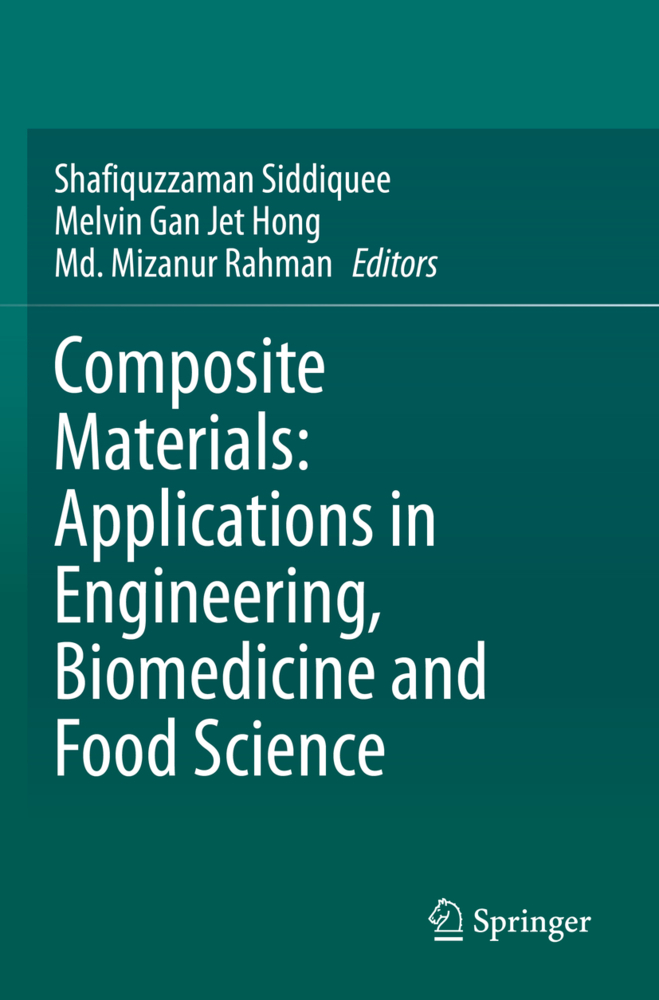Composite Materials: Applications in Engineering, Biomedicine and Food Science
Composite Materials: Applications in Engineering, Biomedicine and Food Science
Composite materials are formed when the combination of separate materials acquire new properties distinct from its components. They have a range of applications in fields such as mechanical and electrical engineering, food science and biomedicine and represent a fast-growing area of research.
Composite Materials: Applications in Engineering, Biomedicine and Food Science provides an overview of current technologies and applications related to composite materials in these fields. Organized by discipline, the text encompasses a wide variety of composite materials, including polymer, ceramic, biomaterial, hydroxyapatite, nanofiber and green composites. Early chapters detail the enhanced mechanical, magnetic, dielectric properties of electrical and thermal conductive composite materials, which are essential in daily science. Subsequent chapters focus on filler or reinforcement materials, including carbon materials, hybrid materials and nanomaterials. Particular emphasis is placed on nanocomposite materials, as these have increasingly diverse field applications. Various manufacturing methods, such as the synthesis method and top-down/bottom-up manufacturing, are also discussed. Coverage of the recent progress, challenges and opportunities surrounding composite materials make this text a one-stop reference for engineers, scientists and researchers working in this exciting field.
<p>1. Carbon materials from various sources for composite materials.- </p><p>2. Carbon Fibre Reinforced Polymer (CFRP) Composites: Machining Aspects and Opportunities for Manufacturing Industries.- </p><p>3. Surface modification of graphene nanoplatelets (GNP) towards preparation of natural/synthetic rubber blend nanocomposites.- </p><p>4. Mechanical properties of nanoclay composite materials.- </p><p>5. Fireproof capability of rigid polyurethane foam based composite materials.- </p><p>6. Structural behavior of composite materials in fire.- </p>7. Natural resources based green composite materials.- <p></p><p>8. Composite materials for wind turbine structure.- </p><p>9. Electrochromic Smart Windows: An Energy-efficient Technology.- </p><p>10. Graphitic Carbon Nitride/ Metal Oxides Nanocomposites and Their Applications in Engineering.- </p><p>11. Application of Nanofiber-based Composites: Progressive Health Impact.- </p><p>12. Polymer-based Nanocomposite: Recent Trends in Safety Assessments in biomedical applications.-</p><p>13. Modern approach of hydroxyapatite based composites for biomedical applications.- </p>14. Hybrid Composite in Orthopedic applications.- <p></p><p>15. Polymer-based composite in biomedical applications.- </p><p>16. Components of All-solid-state Ion-Selective Electrodes (AS-ISEs) .- </p><p>17. Nanocellulose and Nanocellulose-based Composites for Food Applications.- </p><p>18. Nanocomposite Materials in Food Packaging: Opportunities, Challenges and Safety Assessment.- </p><p>19. Biodegradability and Composite Coatings: Past, Present and Future Prospects.- </p><p>20. Nanocomposite Film for Food Packaging: Opening Doors to Future Applications.- </p><p>21. Functional Chitosan-Based Composites for Potential Application in Food Industry.- </p><p>22. Metal-insulator-metal as a biosensing platfrom .</p>
Siddiquee, Shafiquzzaman
Gan Jet Hong, Melvin
Mizanur Rahman, Md.
| ISBN | 978-3-030-45491-3 |
|---|---|
| Artikelnummer | 9783030454913 |
| Medientyp | Buch |
| Auflage | 1st ed. 2020 |
| Copyrightjahr | 2021 |
| Verlag | Springer, Berlin |
| Umfang | XI, 484 Seiten |
| Abbildungen | XI, 484 p. 213 illus., 112 illus. in color. |
| Sprache | Englisch |









